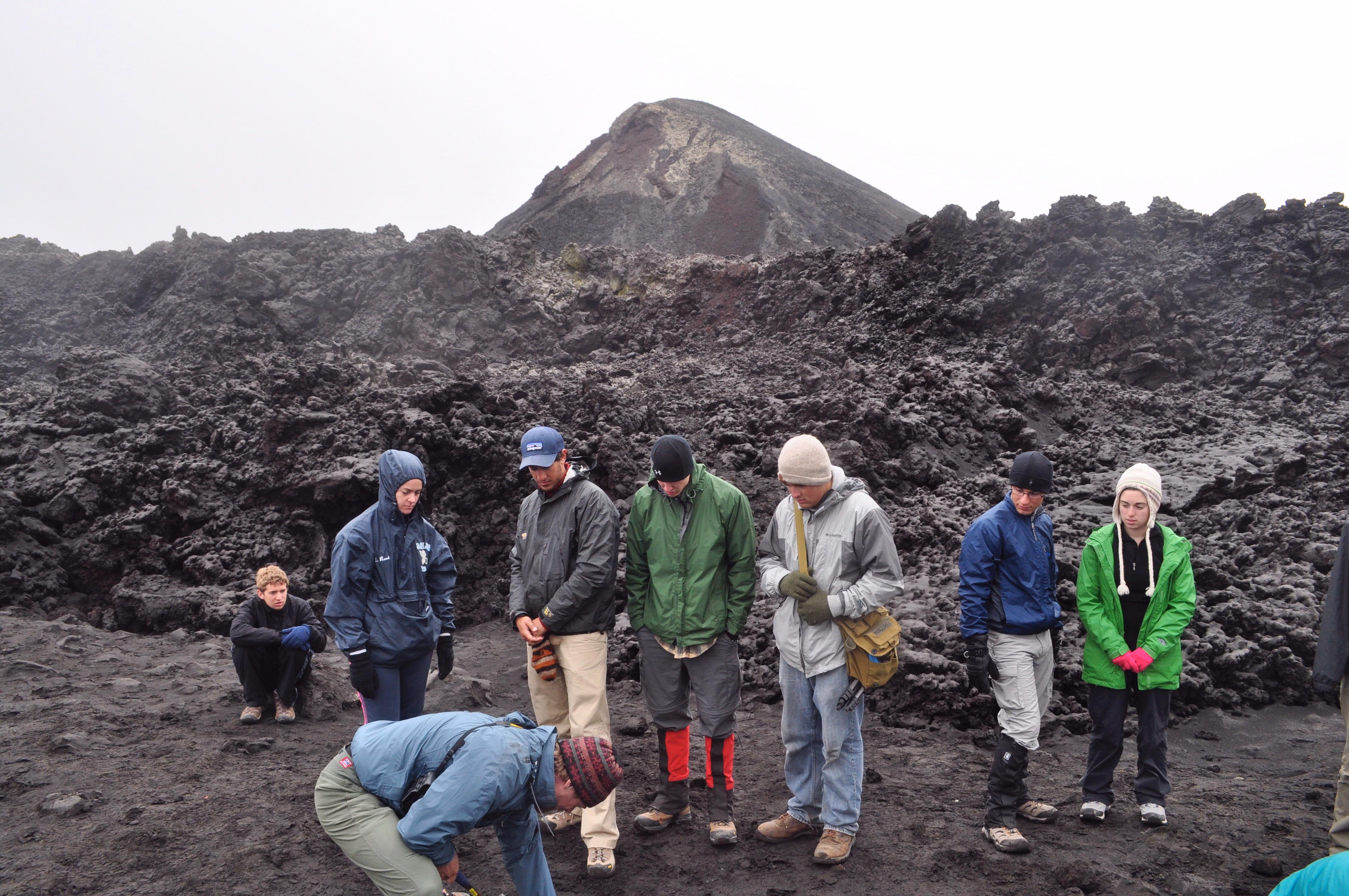
Our backcountry camping tour of Iceland began our second week. Prior to that, we had been staying in hostels around the capital area, but come Sunday we piled our packs in a bus and prepared for a week on the road. Our bus was nicely equipped with a cooking trailer, and we were accompanied by Sola, our cook (and her daughter Sofia, whose English put us all to shame) our driver, Franz, and our guide, Jon, who has known Professor Tewksbury for more than 30 years! Jon had an encyclopedic knowledge of both the geologic and cultural history of Iceland, and was actually only conducting the tour as part of his summer vacation—his day job is as a pastor of a Lutheran congregation near Reykjavik. For meals, we had typical Iceland fare such as cucumber sandwiches, lamb or fish, and potatoes. Lots of potatoes.
All of us were impressed when our large tour bus (navigated by Franz) managed to plow through rivers and take hairpin turns on cliffs. Driving got quite bumpy when we passed through the area that had been flooded by a glacial flood (jökulhlaup) from Eyjafjallajökull earlier this spring. The roads were only recently cleared and we could not reach our intended campsite when a river turned out to be too deep to cross. We were, however, able to observe Gigjökull, the glacier tongue from which the Eyjafjallajökull floods burst. We had to keep our distance, as there may still be toxic volcanic gases in the air at the site. The glacier tongue was covered in ash, and you could see the valley where the water had cleared away everything in its path.
The highlight of the trip for me was without a doubt our hike up to Fimmvörðuháls. Fimmvörðuháls was the site of the first volcanic eruption in Iceland last March. The difference between the two eruptions was that the first was a subaerial fissure eruption, which is less explosive and above ground. The second eruption was phreatomagmatic, meaning it occurred underwater (in this case, a glacier) and was very explosive.
The hike itself was one of the most strenuous of our endeavors, but certainly also the most rewarding. We set off from our base camp in Þórsmörk early in the morning and hiked up the valley that extends between two of Iceland’s glaciers, Mýrdalsjökull and Eyjafjallajökull. The higher we ascended, the more we could see of the truly spectacular countryside and eventually we got our first aerial view of a glacier. The magnificence of the view multiplied exponentially as we hiked on, passing waterfalls, streams and glaciers, until eventually we could see the steam rising off the flow of the still-hot eruption. At one point, I could see a recent flow, a waterfall, and a glacier all from one vantage point.
Finally we reached the fissure itself—the kilometer long crack in the earth that had produced fire fountains before the subglacial eruption in April. Parts of the flow were still hot, and all of us took samples of the cooled magma at the site. Surprisingly, not all of the flow was black and gray; we found red, yellow, orange, and even blue rocks as well.
Having spent a week looking at flows that were decades, centuries, or millennia old, it was amazing to see something this young turning to geologic history before our eyes.
Nora Grenfell '12, a graduate of New York City Lab School, will be providing updates from Iceland. Please check back to read more about the group's expedition.
- Field Study in Iceland (June 29)
- First Days in Iceland (July 13)
- Iceland's Weather Offers a Little of Everything (July 16)
